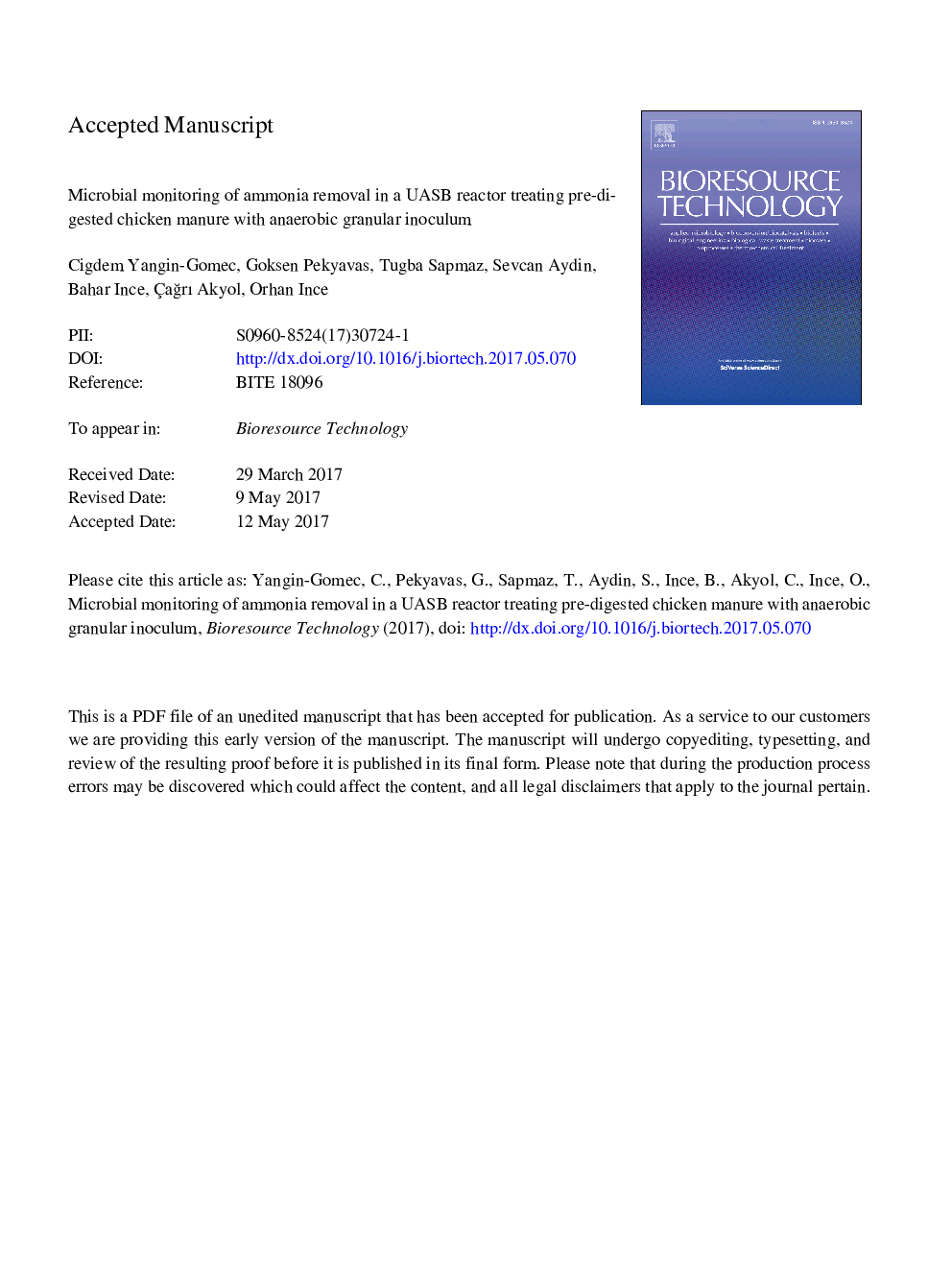| Article ID | Journal | Published Year | Pages | File Type |
|---|---|---|---|---|
| 4997012 | Bioresource Technology | 2017 | 30 Pages |
Abstract
Performance and microbial community dynamics in an upflow anaerobic sludge bed (UASB) reactor coupled with anaerobic ammonium oxidizing (Anammox) treating diluted chicken manure digestate (Total ammonia nitrogen; TAN = 123 ± 10 mg/L) were investigated for a 120-d operating period in the presence of anaerobic granular inoculum. Maximum TAN removal efficiency reached to above 80% with as low as 20 mg/L TAN concentrations in the effluent. Moreover, total COD (tCOD) with 807 ± 215 mg/L in the influent was removed by 60-80%. High-throughput sequencing revealed that Proteobacteria, Actinobacteria, and Firmicutes were dominant phyla followed by Euryarchaeota and Bacteroidetes. The relative abundance of Planctomycetes significantly increased from 4% to 8-9% during the late days of the operation with decreased tCOD concentration, which indicated a more optimum condition to favor ammonia removal through anammox route. There was also significant association between the hzsA gene and ammonia removal in the UASB reactor.
Related Topics
Physical Sciences and Engineering
Chemical Engineering
Process Chemistry and Technology
Authors
Cigdem Yangin-Gomec, Goksen Pekyavas, Tugba Sapmaz, Sevcan Aydin, Bahar Ince, ÃaÄrı Akyol, Orhan Ince,
